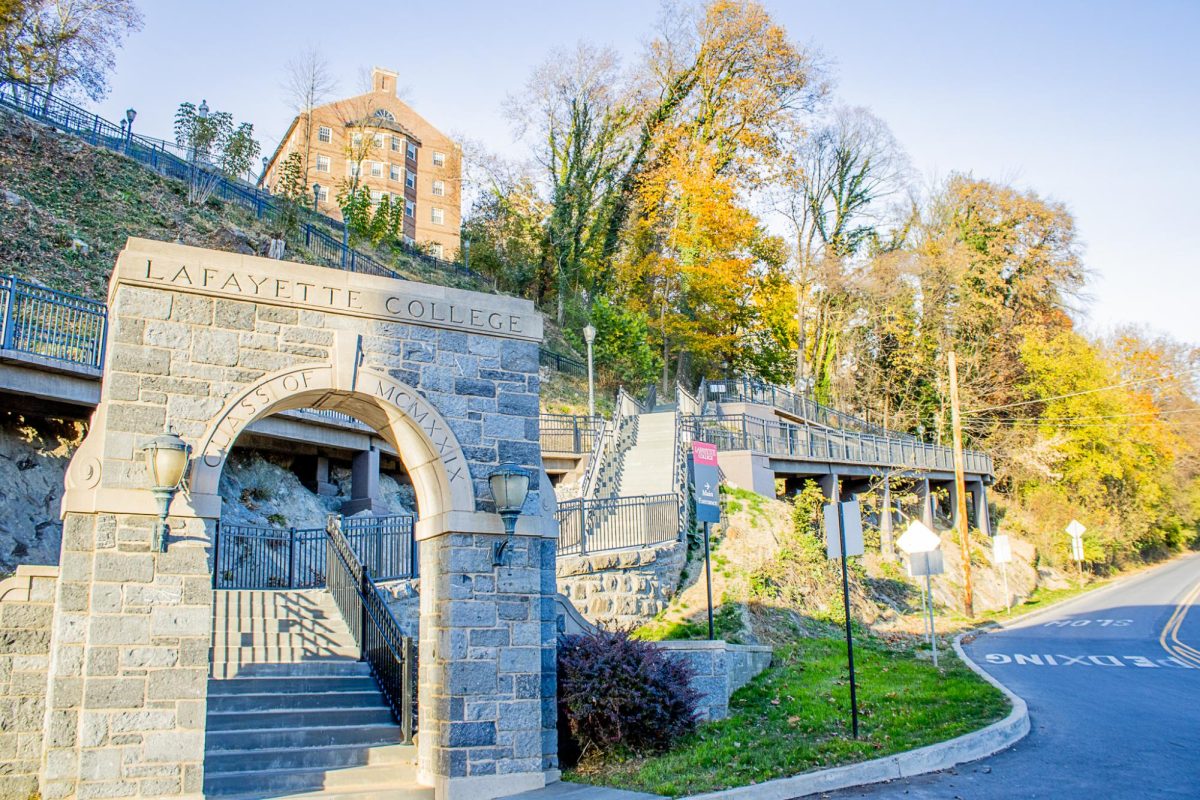The recently completed escarpment steps and trail construction project was found to have violated local law with its removal of over 40 trees from the hillside without city approval. However, the administration has been collaborating with Easton to make up for the loss of vegetation.
“[The trail] was built as proposed,” Easton Mayor Salvatore Panto said. “The deforestation was only because of the lack of a landscaping plan [from Lafayette].”
When it was discovered that the construction would cause more environmental damage than originally mentioned in project proposals, the city required the college to halt construction for 15 days while it re-submitted plans.
Originally, Lafayette made plans to reforest the area to meet city demands. Upon further inspection, this was said to be impossible by the city’s arborists.
Audra Kahr, vice president for finance and administration, said that the administration met with Panto and city arborists to survey the hill and determine the best course of action, which was to plant trees elsewhere and use other methods to limit hill erosion and add vegetation.
“It was discussed … that the only reason trees of that [considerable] size [were] growing on that slope is because they were planted by nature,” Easton’s conservation manager and forester Rob Christopher said. “And that’s the only way they can grow back. Because there’s solid rock below a certain level of that soil … and the only way they could root in is by seed.”
Instead of direct reforestation of the hillside, the college has had to take a combination of different approaches to offset the damage caused by the trail’s construction.
“[The college is] going to do ground cover,” Christopher said.
He noted the college added erosion control rolls, which are ground coverings used to help vegetation grow and prevent erosion.
“They can’t really do any more ground cover planting or shrub planting,” he said. “So that’s going to be pushed to the spring.”
Panto explained that the city held the college accountable for planting more trees.
“The city has a replacement [rule],” Panto said. “If you take out a tree, you gotta replace it with two. This college has offered … trees that we will use in other parts of the campus … or city parks.”
The tree replanting was completed around a month ago near the end of September, according to Christopher. Much of the replanting occurred around the Bushkill parking lot and Scott Park.
The original number of requested replantings was lowered because Lafayette worked to plant larger, higher-caliber trees, according to Christopher. This trade-off of quality over quantity was deemed to be equivalent to Easton’s first request of 98 trees.
While the college cannot take action to return the hillside to its original state, there is some level of optimism regarding the future of the escarpment’s environment, so long as precautions are taken. Christopher believes that the environment can be partially restored if the area is monitored to prevent the growth of invasive species.
“Over time, if the ground covers’ … seeds start to root in, [it] will allow lots of tree seeds to collect … and start to grow back,” Christopher said. “So the priority really is to plan as much, to maintain it constantly and to try to promote at least low to mid-level trees in the canopy to grow back there even if they don’t want large canopy trees.”
Panto expressed hope for the future of the project.
“Change is difficult,” Panto said. “This has a negative impact today, but I think [the trail will] have a positive impact.”























































































































